SAT advanced math
1/19
There's no tags or description
Looks like no tags are added yet.
Name | Mastery | Learn | Test | Matching | Spaced |
|---|
No study sessions yet.
20 Terms
Square of sum
a2+2ab+b2=(a+b)2

Square of difference
a2-2ab+b2=(a-b)2

Difference of squares
a2-b2=(a+b)(a-b)

Adding and subtracting exponential expressions

Multiplying and dividing exponential expressions

Raising an exponential expression to an exponent and change of base

Negative exponent
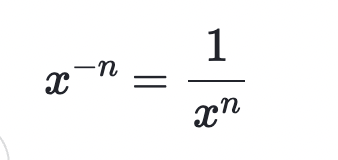
Zero exponent

the quadratic formula

number of real solutions from the discriminant (b2-4ac)
>0, 2 real solutions
=0, 1 real solution
<0, no real solution

can we divide by 0?
If a solution leads to division by \[0\], then that solution is extraneous
The radical operator calculates only
the positive square root
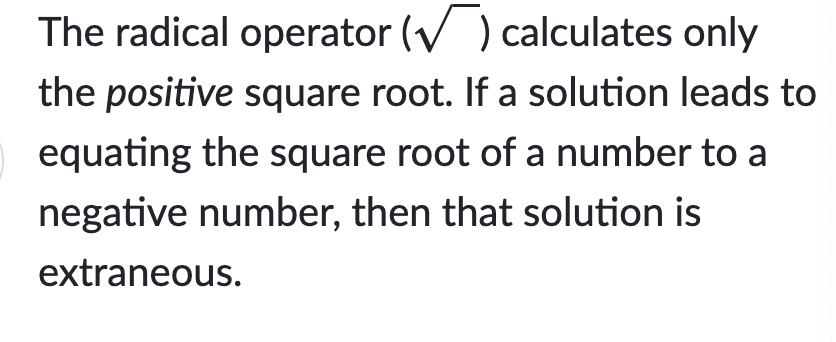
For the absolute value equation |ax+b |=c rewrite the equation as the following linear equations and solve them
ax+b=c
ax+b=-c
Both solutions are solutions to the absolute value equation
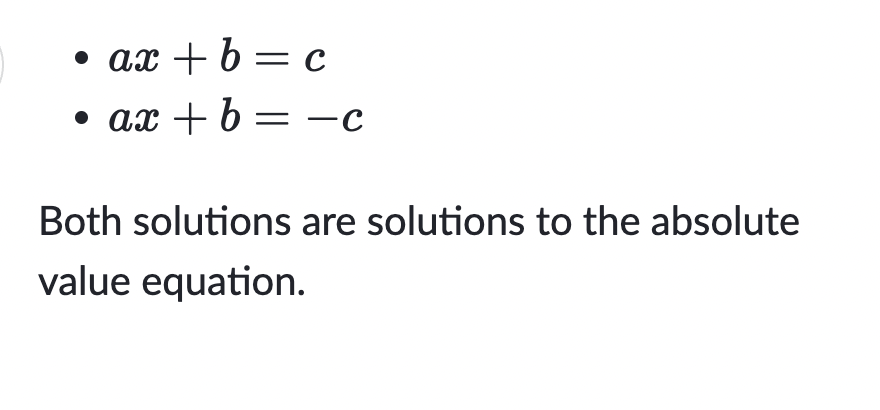
Standard form quadratic equations

Factored form quadratic equations

Vertex form quadratic equations

When we're given a quadratic function, we can rewrite the function according to the features we want to display:
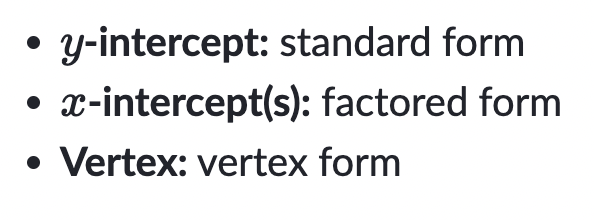
Transformations
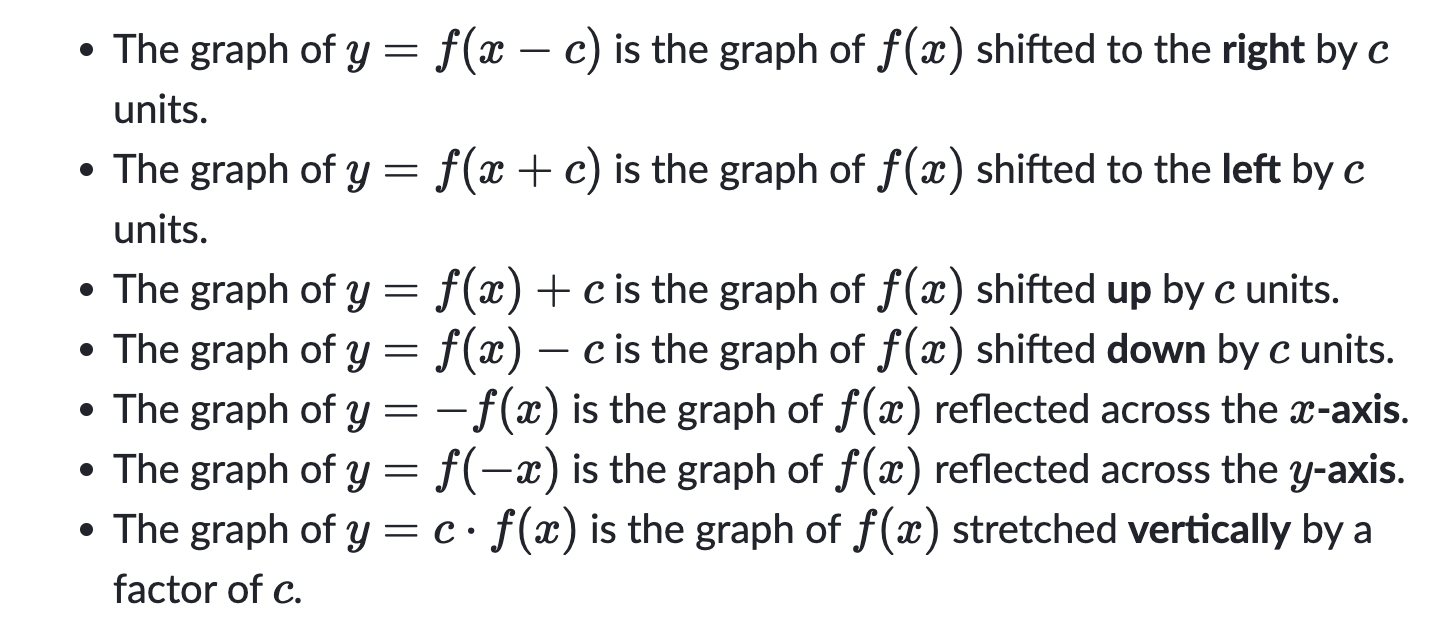
For f(x)=bx where b is a positive real number:
If \[b>1\], then the slope of the graph is positive, and the graph shows exponential growth. As \[x\] increases, the value of \[y\] approaches infinity. As \[x\] decreases, the value of \[y\] approaches \[0\].
If \[0<b<1\], then the slope of the graph is negative, and the graph shows exponential decay. In this case, as \[x\] increases, the value of \[y\] approaches \[0\]. As \[x\] decreases, the value of \[y\] approaches infinity.
For all values of \[b\], the \[y\]-intercept is \[1\].
![<ul><li><p>If <span style="font-size: inherit; font-family: inherit">\[b>1\]</span>, then the slope of the graph is positive, and the graph shows <strong>exponential growth</strong>. As <span style="font-size: inherit; font-family: inherit">\[x\]</span> increases, the value of <span style="font-size: inherit; font-family: inherit">\[y\]</span> approaches infinity. As <span style="font-size: inherit; font-family: inherit">\[x\]</span> decreases, the value of <span style="font-size: inherit; font-family: inherit">\[y\]</span> approaches <span style="font-size: inherit; font-family: inherit">\[0\]</span>.</p></li><li><p>If <span style="font-size: inherit; font-family: inherit">\[0<b<1\]</span>, then the slope of the graph is negative, and the graph shows <strong>exponential decay</strong>. In this case, as <span style="font-size: inherit; font-family: inherit">\[x\]</span> increases, the value of <span style="font-size: inherit; font-family: inherit">\[y\]</span> approaches <span style="font-size: inherit; font-family: inherit">\[0\]</span>. As <span style="font-size: inherit; font-family: inherit">\[x\]</span> decreases, the value of <span style="font-size: inherit; font-family: inherit">\[y\]</span> approaches infinity.</p></li><li><p>For all values of <span style="font-size: inherit; font-family: inherit">\[b\]</span>, the <span style="font-size: inherit; font-family: inherit">\[y\]</span>-intercept is <span style="font-size: inherit; font-family: inherit">\[1\]</span>.</p></li></ul><p></p>](https://knowt-user-attachments.s3.amazonaws.com/09d237cb-b4b2-40e0-bf75-8964d9eb79d1.png)
For the highest power term axn in the standard form of a polynomial function:
think of the end of precalc
